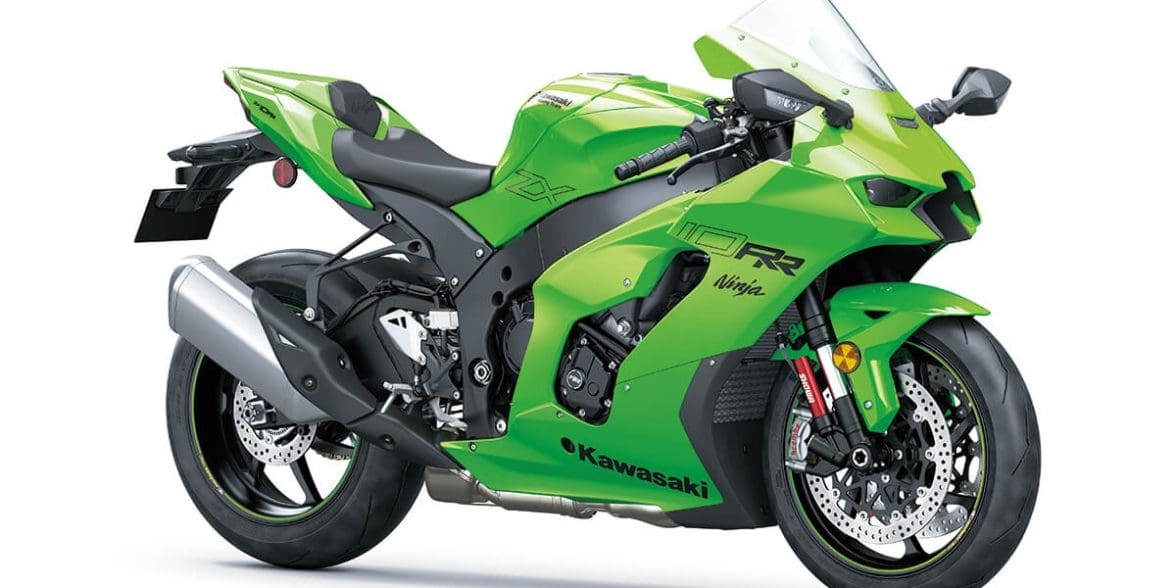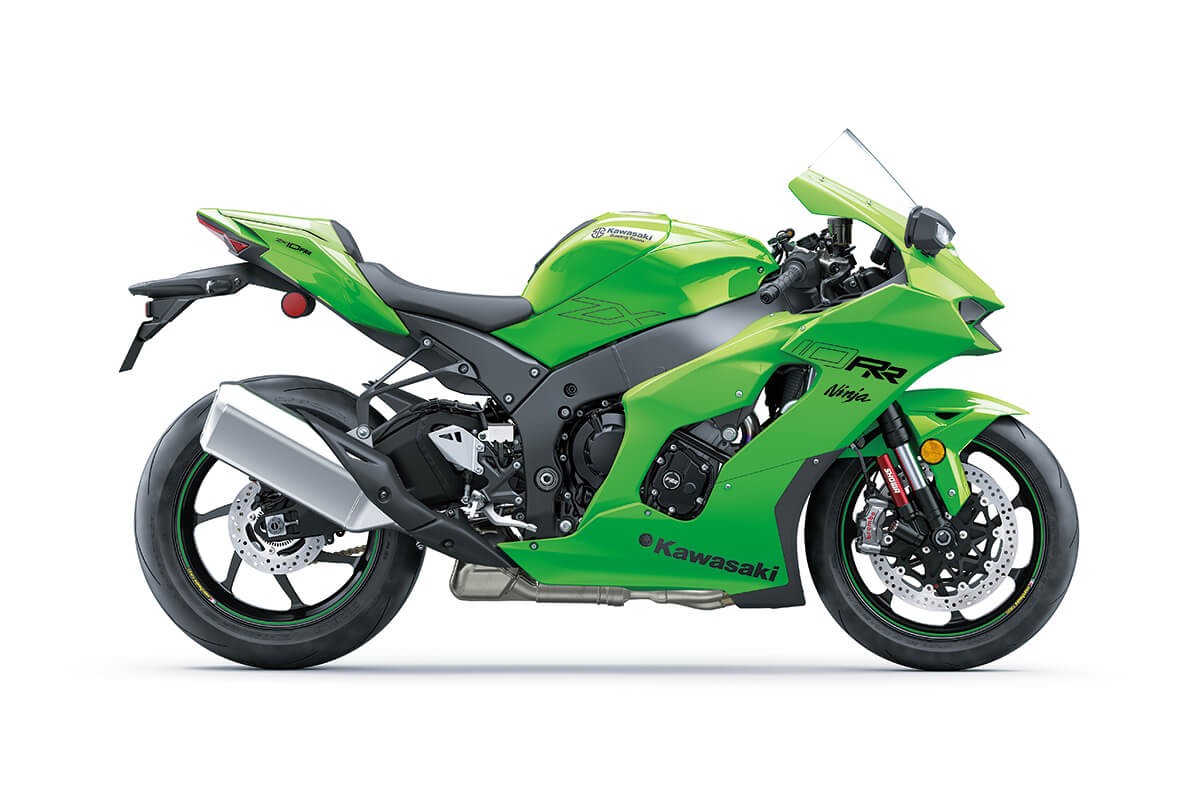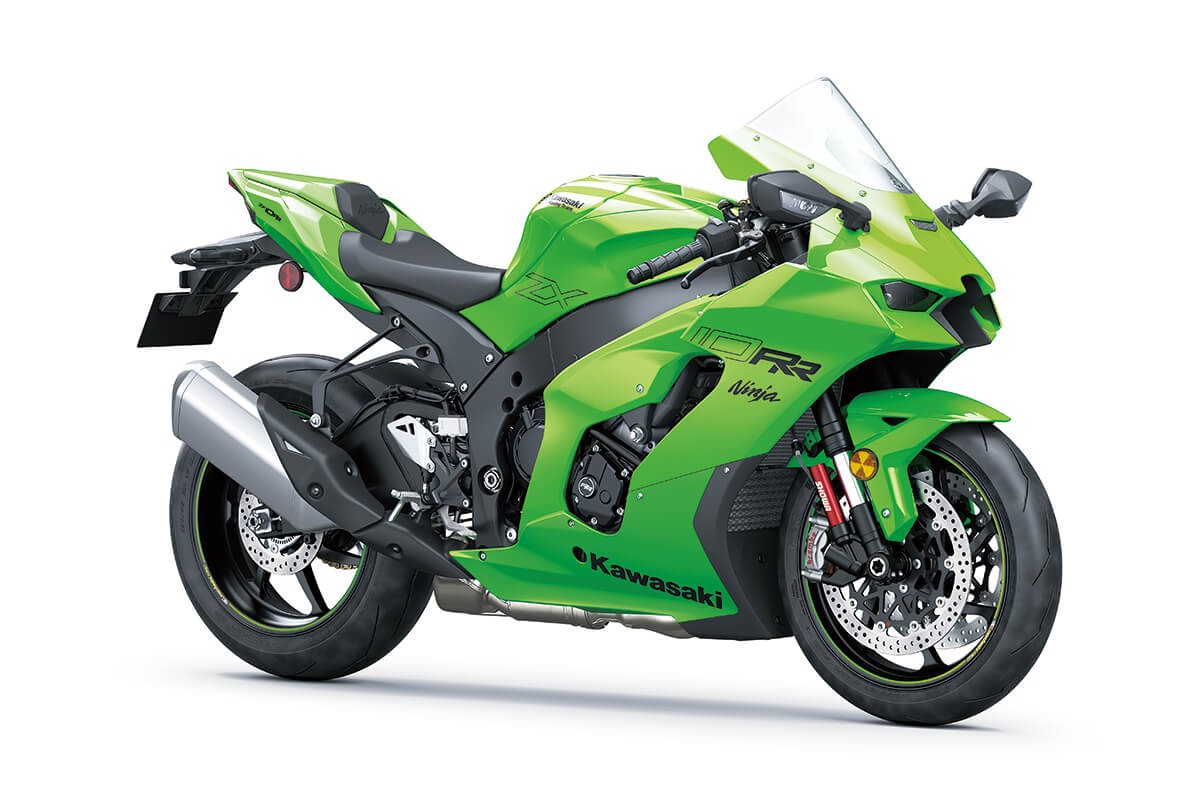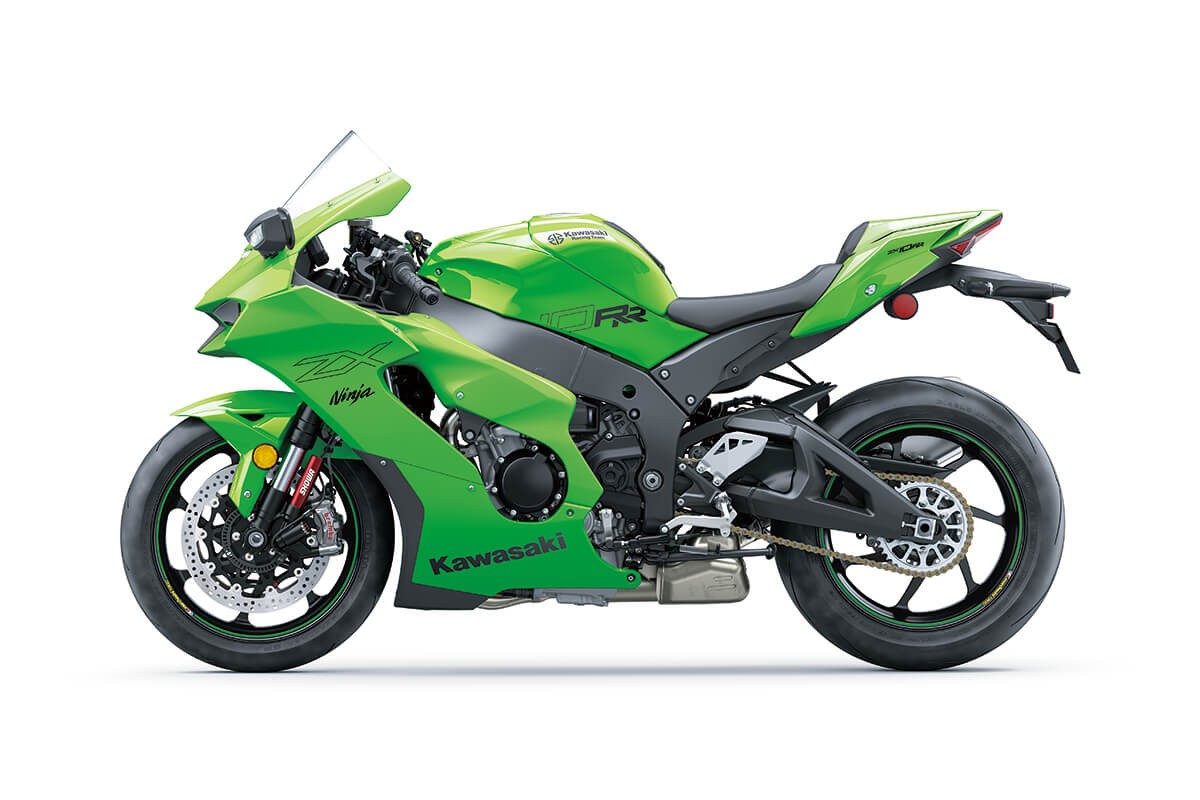The 2023 Kawasaki Ninja ZX-10RR Is A Turn-Key Superbike
Contents
For 2023, Kawasaki’s design team went all out on this turn-key racer, the Ninja ZX-10RR. It’s a formidable motorcycle with an impressive 998cc engine capable of producing an astonishing 214 horsepower. While not the most powerful in the 2023 Kawasaki lineup, it’s enough to satisfy almost any rider. The Ninja ZX-10RR’s sleek body design provides superb stability at high speeds and minimal wind resistance, allowing riders to fully explore the bike’s capabilities without compromising their safety.
Advanced electronics such as a quick shifter, launch control, and multiple power modes, give riders full control over the bike’s performance. The Ninja ZX-10RR features a lightweight frame, high-performance brakes, and sophisticated suspension systems, providing excellent handling and agility on the road. The bike’s traction control, corner management function, and engine braking control ensure a smooth and safe ride even in the most challenging conditions. Riders can easily adjust the bike’s settings to suit their individual preferences and riding style thanks to the bike’s advanced electronic systems. The Ninja ZX-10RR is also equipped with advanced safety features, such as a slipper clutch that helps prevent wheel lockup during downshifts and an intelligent braking system that optimizes braking force based on rider input and road conditions. The bike is the pinnacle of high performance bikes and few of the Japanese brands have an answer for its capabilities.
The 2023 Kawasaki Ninja ZX-10RR starts at: $29,699 USD/not available in Canada
On this page: we’ve curated specs, features, news, photos/videos, etc. so you can read up on the new 2023 Kawasaki Ninja ZX-10RR in one place.
Model Overview
General Info
- Price: $29,699 USD (Not available in Canada)
- Key Features:
-
- Kawasaki Quick Shifter/Traction Control/Cornering Management
- Ohlins Steering Damper
- Cruise Control
- TFT display
Main Specs
- Engine: 998cc 4-stroke, In-Line Four, DOHC, 16-valve, liquid-cooled
- Power: 214 horsepower
- Torque: 82.5 lb-ft
- Weight: 456 lbs (207 kgs)
- Seat Height: 32.9 inches (835 mm)
Competitors
2023 Kawasaki Ninja ZX-10RR Specifications
ENGINE |
||
| Engine | 998cc, 4-stroke, In-Line Four, DOHC, 16-valve, liquid-cooled | |
| Power | 201 hp | |
| Bore x Stroke | 76.0 x 55.0mm | |
| Compression Ratio |
13.0:1
|
|
| Fuel System | DFI® w/47mm Mikuni throttle bodies (4) with oval sub-throttles, two injectors per cylinder | |
| Starter | Electric | |
| Lubrication | ||
DRIVETRAIN |
||
| Clutch | ||
| Transmission | 6-speed, return shift | |
| Final Drive | Sealed chain | |
CHASSIS |
||
| Suspension Front | 43mm inverted Balance Free Fork, adjustable stepless rebound and compression damping, spring preload adjustability/4.7 in | |
| Suspension Rear | Horizontal back-link with Balance Free gas-charged shock, stepless, dual-range (low-/high-speed) compression damping, stepless rebound damping, fully adjustable spring preload/4.5 in | |
| Brakes Front | Intelligent Braking (KIBS), Brembo® dual semifloating 330mm discs with dual radial mounted monobloc 4-piston calipers | |
| Brakes Rear |
KIBS-controlled, single 220mm disc with aluminum single-piston caliper
|
|
| Tires Front | 120/70 ZR17 | |
| Tires Rear | 190/55 ZR17 | |
| Fuel Tank Capacity | 4.5 gal | |
| Color |
Lime Green
|
|
ELECTRICAL |
||
| Ignition | TCBI with digital advance and Sport-Kawasaki Traction Control (S-KTRC) | |
| Spark Plugs | ||
| Headlight | LED | |
| Tail Light | LED | |
DIMENSIONS |
||
| Overall Length | 82.1 in | |
| Overall Width | 29.5 in | |
| Overall Height | 46.7 in | |
| Wheelbase | 57.1 in | |
| Ground Clearance | 5.3 in | |
| Seat Height | 32.9 in | |
| Curb Weight | 456.4 lb | |
WARRANTY |
||
| Warranty | 12 months | |
| Kawasaki Protection Plus | 12 / 24 / 36 / 48 months | |
2023 Kawasaki Ninja ZX-10RR Features
Economical Riding Indicator
While effective vehicle speed and engine speed may vary by model, paying attention to conditions that cause the “ECO” mark to appear can help riders improve their fuel efficiency – a handy way to increase cruising range. Further, keeping fuel consumption low also helps minimize negative impact on the environment.
Electronic Throttle Valves
Electronic throttle valves also enable more precise control of electronic engine management systems like S-KTRC and KTRC, and allow the implementation of electronic systems like KLCM, Kawasaki Engine Brake Control, and Electronic Cruise Control.
Kawasaki Engine Brake Control
KLCM (Kawasaki Launch Control Mode)
KCMF (Kawasaki Cornering Management Function)
• S-KTRC/KTRC (including traction management and wheel lift management)
• KLCM (including traction management and wheel lift management)
– Designed to optimize acceleration from a stop
• KIBS (including pitching management and corner braking management)
• Kawasaki Engine Brake Control
POWER MODES
S-KTRC (Sport-Kawasaki Traction Control)
S-KTRC monitors a number of parameters, including front and rear wheel speed (slip), engine rpm, throttle position and acceleration. Conditions are confirmed every five milliseconds, at which time the system looks at each of the parameters as well has how much they are changing (i.e. their rate of change). This unique Kawasaki method makes it possible to make interpolations and precisely calibrate engine output to suit traction conditions. By acting before slippage exceeds the limits of traction, drops in power can be minimized, resulting in ultra-smooth operation.
Because the sophisticated software bases its dynamic analysis on the chassis’ orientation relative to the track surface (rather than relative to a horizontal plane), it is able to take into account corner camber, gradient, etc., and adapt accordingly. It also automatically adjusts for tire wear, different tire profiles, high-grip tires, and numerous other factors that setting-type systems treat as fixed parameters. Models equipped with IMU incorporate chassis-orientation feedback to offer even more precise management.
KQS (KAWASAKI QUICK SHIFTER)
2023 Kawasaki Ninja ZX-10RR Photos
2023 Kawasaki Ninja ZX-10RR Videos
2023 Kawasaki Ninja ZX-10RR review by Starting Machine:
2023 Kawasaki Ninja ZX-10RR Review by Second Gear:
Links
Kawasaki Official Websites





